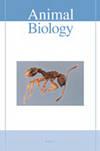Effectiveness of different management strategies against Nilgai population (Boselaphus tragocamelus) in Punjab Province of India
IF 0.9
4区 生物学
Q2 ZOOLOGY
引用次数: 0
Abstract
Crop raiding has been reported in many parts of Punjab as a result of an overabundance of nilgai antelopes (Boselaphus tragocamelus) and farmers are constantly battling to save their crops. In the present study, various management strategies such as physical deterrents (nylon rope, nylon net and garden net), visual repellents (scarecrow and reflective ribbon), chemical repellents (different concentrations of Neelbo and Ecodon (based on ricinoleic acid) applied by spraying, soaking jute rope, soaked in wood shavings packed in plastic bags and paper cups) and biological deterrents (bioacoustic device and different concentrations of faecal solution of horse, tiger and Himalayan black bear) were evaluated to minimize the damage caused by nilgai. Nylon net was the most promising method, providing complete protection against nilgai, which can be used for protecting crops at vulnerable stages with a one-time cost. The nylon rope and garden net provided partial protection from nilgai damage. The bioacoustic device and reflective ribbon were also effective for a short period of time. Neelbo was found more effective as chemical repellent against nilgai. The faecal solution of horse and Himalayan black bear remained effective as repellent for 10 days. It is thus concluded that while comprehensive damage prevention may be difficult, animal management devices can help reduce nilgai damage at vulnerable stages of the crop. The employment of a range of management devices at the proper time can be part of a cost-effective system to keep nilgai damage at acceptable levels.不同管理策略对印度旁遮普邦Nilgai种群(Boselaphus tragocamellus)的有效性
据报道,旁遮普省许多地区的农作物遭到袭击,原因是nilgai羚羊(Boselaphus tragocamellus)数量过多,农民们一直在为拯救农作物而斗争。在本研究中,通过喷洒、浸泡黄麻绳、,浸泡在塑料袋和纸杯中的木屑中)和生物威慑剂(马、老虎和喜马拉雅黑熊的生物声学装置和不同浓度的粪便溶液),以最大限度地减少nilgai造成的损害。尼龙网是最有前途的方法,可以提供对nilgai的完全保护,nilgai可以一次性用于保护处于脆弱阶段的作物。尼龙绳和花园网提供了部分保护,使其免受nilgai的破坏。生物声学装置和反射带也在短时间内有效。Neelbo被发现作为化学驱蚊剂对nilgai更有效。马和喜马拉雅黑熊的粪便溶液在10天内仍然有效。因此得出的结论是,虽然全面的损害预防可能很困难,但动物管理设备可以帮助减少作物脆弱阶段的nilgai损害。在适当的时候使用一系列管理设备可以成为成本效益高的系统的一部分,以将nilgai损伤保持在可接受的水平。
本文章由计算机程序翻译,如有差异,请以英文原文为准。
求助全文
约1分钟内获得全文
求助全文
来源期刊

Animal Biology
生物-动物学
CiteScore
2.10
自引率
0.00%
发文量
34
审稿时长
3 months
期刊介绍:
Animal Biology publishes high quality papers and focuses on integration of the various disciplines within the broad field of zoology. These disciplines include behaviour, developmental biology, ecology, endocrinology, evolutionary biology, genomics, morphology, neurobiology, physiology, systematics and theoretical biology. Purely descriptive papers will not be considered for publication.
Animal Biology is the official journal of the Royal Dutch Zoological Society since its foundation in 1872. The journal was initially called Archives Néerlandaises de Zoologie, which was changed in 1952 to Netherlands Journal of Zoology, the current name was established in 2003.
 求助内容:
求助内容: 应助结果提醒方式:
应助结果提醒方式:


